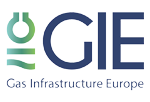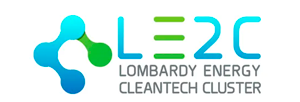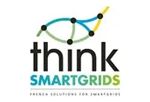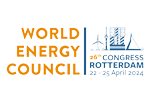The Expected Impact of AI on the Energy Sector and Smart Grid Technology
)
- Event: Enlit Europe
- Date: 24th October 2024
- By: Dainius Dukauskas (European Commission, DG Energy)
- Estimated Read Time: 9–12 minutes
Quick Summary
At Enlit Europe 2024, leaders from across the energy and tech sectors explored how AI is transforming the future of energy.
The panel covered real-world AI applications—such as predictive maintenance, customer engagement, and smart grid upgrades—while highlighting the need for cultural change, responsible governance, and sustainable infrastructure.
Key messages included the importance of “AI by design” the role of regulation as an enabler, and the urgency of scaling solutions to meet rising demand. As the sector faces unprecedented challenges, AI offers both the compass and the engine to drive a resilient, efficient, and sustainable energy future.
Introduction: How AI is Powering the Future of Energy
At the Enlit Europe 2024 Summit, the session titled “The Expected Impact of AI on the Energy Sector” convened policymakers, energy executives, and tech leaders to explore artificial intelligence’s (AI) transformative potential on the rapidly evolving energy landscape.
Moderated by Dainius Dukauskas from the European Commission’s Directorate-General for Energy (DG Energy), the panel brought together influential voices from companies like Enel, EDP, Microsoft, Kraken, Blue Digit, and others for a vibrant discussion that blended real-world applications with bold visions for the future of AI in energy.
Framed around three rounds of questions, the session unpacked how AI is already being used across the energy system, what lies ahead, and how industry and institutions can safely and swiftly scale AI adoption.
Topics ranged from predictive maintenance and customer engagement to workforce transformation, regulatory frameworks, smart grid technology upgrades, and synthetic data innovation.
The discussion underscored a powerful reality: AI is not only a disruptive technology—it’s becoming the digital operating system for the energy transition. As the demands on grids, consumers, and organisations intensify, the right combination of data fluency, design thinking, and responsible oversight will determine whether AI fulfils its vast promise.
Europe’s Strategic AI Roadmap for Energy
Opening the session, Dukauskas addressed the European Commission’s mandate to develop a strategic roadmap for AI in the energy sector. Often seen solely as a regulator, DG Energy is investing in a transparent framework that can support innovation while balancing security and sustainability concerns. The roadmap focuses on:
- Assessing existing and emerging AI use cases across the sector
- Evaluating AI’s potential to accelerate the clean energy transition
- Addressing data privacy, cybersecurity, and system transparency risks
- Examining AI’s own energy footprint and potential strain on grids
“We’re here not just to regulate, but to build enabling governance that promotes safe, meaningful innovation” Dukauskas explained.
Current Applications: Where AI Is Already Creating Value
From Utility to Transformation: Enel’s AI Journey
Nicoletta, Head of Data Governance and Intelligence at Enel, described AI as a “ Swiss knife” already embedded across the company’s operations—from generation to customer engagement. Key use cases include:- Forecasting renewable generation based on weather data
- Predictive maintenance in energy infrastructure at the turbine level
- Computer vision for anomaly detection in grid equipment
- Mobile AI assistants providing safety protocols and real-time field support for technicians
- Gen AI tools streamlining back-office operations and customer service
“AI is not science fiction anymore—it’s helping us manage complexity, improve safety, and increase efficiency across the board” she shared.
EDP: Turning Data into Performance
EDP’s Joel built on that theme, noting how digital tools and machine learning are key to managing a more electrified and decentralised energy system. As society embraces electric vehicles and distributed energy resources, grid operators face rising complexity—making the integration of AI in energy a critical advancement.
“We have a motto: 'Turn data into power, and intelligence into action'” Joel said. EDP focuses on:
- Extracting greater performance from assets
- Reducing unplanned downtime
- Equipping field teams with faster response tools
- Enhancing personalised customer experience at lower operational cost
Blue Digit: Technology Comes Second, Culture Comes First
Marco, CEO of Blue Digit (a digital subsidiary of Italgas), highlighted organisational readiness as a bigger barrier than technology. While AI optimises processes such as supply logistics, asset health, and construction monitoring, its real success hinges on mindset.“It’s not the use case—it’s the capacity to scale it sustainably” Marco warned. “We’ve mapped over 100 AI use cases, but cultural change and digital infrastructure are the real foundations.”
Rebuilding the Grid from the Ground Up
Andrew, representing a company redesigning modern power grids, argued that the traditional grid—an “elegant but rigid analog computer”—is ill-equipped to handle the variability introduced by renewables, distributed generation, and electrification. His company is reinventing substations with edge-based AI robotics that:
- Interpret analog signals in real time
- Execute adaptive control for voltage, frequency, and phase
- Process over 11 GB of data hourly without relying on centralised clouds
This approach represents the next generation of smart grid technology aimed at transforming static infrastructure into dynamic, responsive networks.
“We’re not in the hardware business—we’re in the grid reinvention business” he stated. “Without distributed AI, we will never meet 2050 targets or handle threefold increases in demand.”
Kraken: AI at the Customer and Asset Edge
Kraken’s representative showcased how AI is revolutionising the customer experience through large language models (LLMs) and consumer-level energy flexibility. Their tool, Magic Inc, handles over 50% of Octopus Energy’s outbound customer communication, improving satisfaction rates by 20%.
On the grid side, Kraken manages over 1.3 GW of flexible distributed assets (including EVs and smart batteries) with 90% forecast accuracy—making predictive maintenance in energy and operational agility core achievements of the AI platform.
“Distributed flexibility is the next energy revolution. If we don’t get this right, we’re in trouble” he warned.
Microsoft: Five Critical Roles for AI in Energy
Per-Christian from Microsoft outlined five areas where AI is delivering significant returns in the energy space:
- Workforce Productivity – AI co-pilots streamline collaboration and reduce admin burden
- Customer Matching – AI-enabled 24/7 load matching enhances consumption prediction
- Process Optimisation – Permitting and environmental audits accelerated via automation and 3D models
- R&D Acceleration – Material science breakthroughs through generative exploration of 32 million battery compounds
- Infrastructure Management – Anomaly detection and multivector orchestration for OT/IT assets
“AI is becoming a general-purpose technology across the sector” he noted. “This isn’t a collection of edge cases—it’s a systemic enabler.”
What’s Next: Dreaming Bigger, Scaling Faster
In the second round, panelists reflected on the future of AI in energy—and what’s needed to make big dreams a reality.
Scaling Human Potential with Lego-Brick Strategies
Nicoletta emphasised that the future of AI is about reinforcing people, not replacing them. Enhancing front-line safety, upskilling knowledge workers, and applying modular AI components across systems will radically accelerate adoption.
“In asset resilience, we’re working on synthetic data to train models for extreme weather events. Our future depends on better anticipatory frameworks” she explained.
AI by Design, Not by Addition
Joel cautioned that bolting AI onto old processes won’t be enough. True innovation requires “AI by design”—rethinking workflows and architectures from the ground up to optimise them for digital intelligence.
“In three to five years, AI will be native. It won’t be called digital transformation anymore—it will just be business” he said.
Beyond Use Cases: Focusing on Capabilities
Marco argued that the real challenge lies in managing change. “We can develop use cases in months, but the big question is: then what? Jobs will be different. We can’t ignore the organisational responsibility.”
From Grid Collapse to Reinvention
Andrew spoke passionately about the mismatch between exponential demand for electricity and the ageing grid’s capabilities. AI isn’t optional—it’s the only scalable solution that can cope with volatile supply and extreme demand. Integrating smart grid technology will be essential for this transformation to succeed at scale.
“This is the biggest problem humanity’s ever solved. We must move beyond legacy distribution and turn devices into intelligent agents” he said.
The AI Journey: From Nokia to iPhone, Fast
The Kraken speaker offered a vivid analogy. “Three years ago, nobody knew what large language models were. Now they’re Google-level tools. We’ve gone from the Nokia phase of AI to the BlackBerry—and the iPhone days are coming even faster.”
From Strategy to Execution: What Will It Take?
Regulations as Enablers, Not Obstacles
Nicoletta argued that regulation, like the upcoming EU AI Act, can actually support progress by formalising governance models and setting clear ethical boundaries—especially in infrastructure-intensive sectors like energy.
Joel added, “Let’s make regulation an incentive—not a brake. Europe must avoid stumbling over its own caution.”
Cybersecurity & Workforce Readiness
As AI tools advance, so does the sophistication of threats. Systems must be engineered with resilience and robustness in mind. At the same time, new talent pipelines are urgently needed. “We all want the same people—and it’s not sustainable” Joel said, pushing for academic-industry alliances to grow domain-specific AI talent.
Infrastructure, Context & Sustainability
Andrew and Per-Christian stressed the importance of contextualised industrial data—moving beyond LLMs trained on text to models tailored to operational technologies.
Panelists also cautioned that the sustainability impact of AI infrastructure must not be underestimated. “Let’s not forget,” said Marco, “AI requires electricity too.”
Per-Christian reassured the group that Microsoft is committed to powering all data centres with 100% renewables by 2025 and reaching carbon-negative status by 2030.
Audience Q&A: Collaboration and Cross-Sector Use?
Audience member Luis from the Portuguese DSO posed a final question about overcoming industry silos in AI deployment.
Kraken and EDP responded that while broader collaboration is ideal, even within energy itself, harmonisation among policy, technology, and operations remains a pressing hurdle—and a promising opportunity.
Closing Reflections: Optimism With Responsibility
In his closing remarks, Dukauskas summarised the discussion eloquently:
“AI isn't a nice-to-have—it’s an accelerator we cannot afford to ignore. But its success will hinge on how we apply it strategically, regulate it wisely, and scale it responsibly.”
Session Takeaways
- AI is already embedded across the energy value chain—from forecasting to flexibility services
- Predictive maintenance, customer engagement, and operational optimisation are leading applications
- Industrial data must be contextualised for meaningful AI outputs
- Grid reinvention will require intelligent, decentralised agents—not just upgrades
- Culture and organisational change are as critical as technological readiness
- Regulation should enable, not retard; AI governance needs clarity, not friction
- Data centres for AI must remain accountable to sustainability and clean energy goals
Final Thought
AI gives the energy sector both the compass and the engine. From predictive maintenance in energy to next-generation smart grid technology, the path forward is steep, but with insight, agility, and collaboration, it can power a resilient, sustainable, and smart energy future.
Other Past Sessions
-
Event: Enlit Europe Date: 24th October 2024 By: Lorena Baschwitz Estimated Read Time: 15–20 minutes Quick Summary Artificial intelligence in energy, edge computing in utilities, and digital tr ...
-
Event: Enlit Europe Date: 19th November 2024 By: Paolo Gallo, Ana la Fuente, Hello from EDP, Greg Jackson, Gianni Vittorio Armani Estimated read time: 10–12 minutes Quick Summary How can Europ ...
-
Event: Enlit Europe Date: 24th October 2024 By: Maureen Cornelius, Executive Director of Next Energy Consumer Estimated Read Time: 15-18 minutes Quick Summary Trust is emerging as a decisive ...
-
Event: Enlit Europe Date: 24th October 2024 By: Dainius Dukauskas (European Commission, DG Energy) Estimated Read Time: 9–12 minutes Quick Summary At Enlit Europe 2024, leaders from across the ...


)
)
)
)
























































